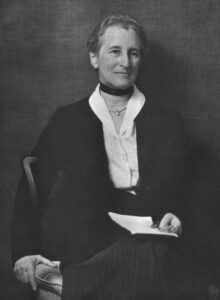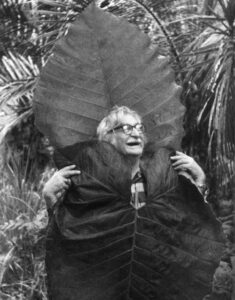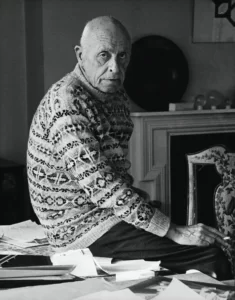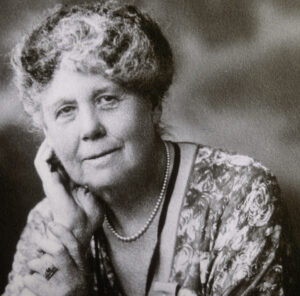In the rich tapestry of American horticulture, certain figures stand as luminaries whose influence transcends the boundaries of time. The 20th century witnessed the emergence of visionary gardeners whose artistry transformed landscapes, leaving an enduring imprint on the nation’s gardening legacy. From pioneers of modernist design to advocates of sustainable practices, these individuals reshaped the very essence of American gardens. Join us on a journey to explore the lives, contributions, and lasting legacies of the iconic American gardeners who, with their hands in the soil and a vision in their hearts, sculpted the verdant wonders that grace our homes and public spaces today.
Beatrix Farrand: The Landscape Architect Pioneer
 Beatrix Farrand (1872–1959) was a trailblazing landscape architect whose impact on American gardens remains indelible. Known for her innovative designs, Farrand was the only female founding member of the American Society of Landscape Architects. She contributed significantly to the design of prestigious landscapes, including the Dumbarton Oaks gardens in Washington, D.C., and the Abby Aldrich Rockefeller Garden in Maine. Farrand’s legacy extends beyond her designs; her influential book, “A Garden Book for Autumn and Winter,” continues to inspire gardeners and designers.
Beatrix Farrand (1872–1959) was a trailblazing landscape architect whose impact on American gardens remains indelible. Known for her innovative designs, Farrand was the only female founding member of the American Society of Landscape Architects. She contributed significantly to the design of prestigious landscapes, including the Dumbarton Oaks gardens in Washington, D.C., and the Abby Aldrich Rockefeller Garden in Maine. Farrand’s legacy extends beyond her designs; her influential book, “A Garden Book for Autumn and Winter,” continues to inspire gardeners and designers.
Founding Member and Pioneer
In 1899, Beatrix Farrand became a founding member of the American Society of Landscape Architects (ASLA). This marked a significant milestone in her career and in the history of the profession, as she was the only woman among the founding members. Her membership paved the way for future generations of female landscape architects.
Notable Works
Farrand’s design portfolio boasts an array of prestigious landscapes, each a testament to her innovative approach and mastery of the craft. One of her most acclaimed works is the Dumbarton Oaks gardens in Washington, D.C. Created in collaboration with Mildred Bliss, the garden seamlessly blends formal and informal elements, showcasing Farrand’s ability to marry classical design principles with naturalistic aesthetics.
Another jewel in her crown is the Abby Aldrich Rockefeller Garden in Seal Harbor, Maine. This private garden, commissioned by Abby Aldrich Rockefeller, features terraced flower beds, serene pools, and a walled garden, all harmoniously integrated into the surrounding landscape.
Legacy Beyond Designs
Beatrix Farrand’s impact extends far beyond the physical spaces she crafted. Her influential book, “A Garden Book for Autumn and Winter,” published in 1921, remains a source of inspiration for gardeners and designers alike. In the book, Farrand shares her insights into planning and cultivating gardens during the often-overlooked seasons of autumn and winter.
Recognition and Honors
Throughout her illustrious career, Beatrix Farrand received numerous accolades, including the Gold Medal of the American Academy of Arts and Letters in 1955. Her legacy is also honored through the Beatrix Farrand Society, an organization dedicated to preserving and promoting her work.
In Short
Beatrix Farrand’s life and work exemplify resilience, creativity, and a deep passion for the art and science of landscape architecture. As a pioneer in a male-dominated profession, she paved the way for future generations of landscape architects, particularly women, to contribute to the shaping of the natural world. Her gardens stand not only as testaments to her skill but as living landscapes that continue to inspire and captivate all who encounter them. Beatrix Farrand’s legacy is a celebration of the enduring beauty and significance of well-designed, thoughtfully crafted outdoor spaces.
Roberto Burle Marx: The Brazilian Modernist in American Gardens
 Roberto Burle Marx (1909–1994), although Brazilian by birth, made a profound impact on American gardens. A distinguished landscape architect, painter, and plant collector, Burle Marx introduced modernist principles to landscape design. He designed the iconic rooftop garden of the Banco Safra building in São Paulo and the Copacabana Beach promenade. In the United States, his work includes the gardens at the Ford Foundation headquarters in New York City. Burle Marx’s use of bold colors and innovative plant combinations left an enduring mark on American garden design.
Roberto Burle Marx (1909–1994), although Brazilian by birth, made a profound impact on American gardens. A distinguished landscape architect, painter, and plant collector, Burle Marx introduced modernist principles to landscape design. He designed the iconic rooftop garden of the Banco Safra building in São Paulo and the Copacabana Beach promenade. In the United States, his work includes the gardens at the Ford Foundation headquarters in New York City. Burle Marx’s use of bold colors and innovative plant combinations left an enduring mark on American garden design.
Distinctive Design Principles
Burle Marx was a trailblazer in introducing modernist principles to landscape architecture. His designs embraced bold colors, innovative plant combinations, and a departure from traditional formalism. This departure marked a shift toward more organic and dynamic outdoor spaces that reflected the spirit of the modern era.
Iconic Projects in Brazil
In Brazil, Burle Marx left an enduring legacy through his iconic projects. One of his most celebrated works is the rooftop garden of the Banco Safra building in São Paulo. This rooftop oasis, characterized by abstract patterns of colorful tiles and a diverse array of tropical plants, showcased Burle Marx’s ability to transform urban spaces into living works of art.
His influence also extended to the Copacabana Beach promenade in Rio de Janeiro, where he collaborated with architect Oscar Niemeyer. The undulating patterns and vibrant mosaic designs along the beachfront are a testament to Burle Marx’s artistic vision.
Impact on American Gardens
While Roberto Burle Marx’s primary body of work is in Brazil, his influence reached American soil, notably in the gardens at the Ford Foundation headquarters in New York City. In these gardens, he applied his modernist principles, creating outdoor spaces that embraced the dynamism of his artistic vision.
His use of bold and contrasting colors, unconventional plant choices, and a departure from traditional geometric forms challenged the norms of American garden design. The gardens at the Ford Foundation exemplify Burle Marx’s ability to infuse vitality and artistic expression into urban landscapes.
Legacy and Recognition
Roberto Burle Marx’s legacy extends beyond his tangible creations. His advocacy for environmental conservation and his pioneering work in promoting the use of native plants have left an enduring impact on the field of landscape architecture. He received international acclaim for his contributions, including the Gold Medal of Fine Arts from the Brazilian Academy of Fine Arts.
In Short
Roberto Burle Marx’s work transcended borders, and his influence on American gardens is a testament to the universality of his artistic vision. By challenging conventions and introducing modernist principles to landscape design, Burle Marx not only reshaped the aesthetics of outdoor spaces but also inspired a new generation of landscape architects to think creatively and embrace the beauty of nature in all its vibrant forms. His legacy lives on in the gardens he designed and the ongoing impact of his innovative approach to landscape architecture.
Thomas Church: The Modernist Father of Landscape Architecture
 Thomas Church (1902–1978) played a pivotal role in shaping modern landscape architecture in the United States. A key figure in the development of the “California Style,” Church’s designs emphasized outdoor living spaces, blurring the lines between indoor and outdoor environments. Notable works include the Donnell Garden in Sonoma, California, and the landscape design for Eichler Homes. Church’s ideas, articulated in his influential book “Gardens Are for People,” promoted the idea that gardens should be designed for the enjoyment of everyday life.
Thomas Church (1902–1978) played a pivotal role in shaping modern landscape architecture in the United States. A key figure in the development of the “California Style,” Church’s designs emphasized outdoor living spaces, blurring the lines between indoor and outdoor environments. Notable works include the Donnell Garden in Sonoma, California, and the landscape design for Eichler Homes. Church’s ideas, articulated in his influential book “Gardens Are for People,” promoted the idea that gardens should be designed for the enjoyment of everyday life.
Shaping the “California Style”
Thomas Church’s impact on landscape architecture is particularly notable in the development of the “California Style.” This approach was characterized by an integration of indoor and outdoor spaces, a focus on simplicity, and an emphasis on outdoor living. Church’s designs sought to create harmonious environments that seamlessly extended the home into the surrounding landscape.
Notable Works
Donnell Garden, Sonoma, California
One of Church’s most celebrated works is the Donnell Garden in Sonoma, California. Completed in 1948, this garden exemplifies the principles of the California Style. The integration of outdoor rooms, the use of geometric shapes, and the incorporation of water features showcase Church’s commitment to creating dynamic and functional outdoor spaces.
Landscape Design for Eichler Homes
Thomas Church collaborated with developer Joseph Eichler to design landscapes for Eichler Homes, a groundbreaking residential project in California. Church’s landscape designs complemented the modern architecture of Eichler’s homes, emphasizing outdoor spaces as integral parts of the overall living experience. These designs significantly influenced suburban developments and residential landscaping in the mid-20th century.
“Gardens Are for People”
Church’s ideas and design philosophy are encapsulated in his influential book, “Gardens Are for People,” published in 1955. In this work, he articulated the belief that gardens should be designed for the enjoyment of everyday life. Church advocated for creating landscapes that responded to the needs and desires of the people who would inhabit them, emphasizing functionality, accessibility, and beauty.
Legacy and Impact
Thomas Church’s legacy extends beyond his tangible creations. His advocacy for a human-centric approach to landscape design, his emphasis on outdoor living, and his integration of architecture and landscape continue to influence contemporary landscape architects. Church’s ideas are particularly relevant in the context of sustainable and livable urban environments, where the blurring of indoor and outdoor spaces is increasingly valued.
In Short
Thomas Church’s pioneering work in modern landscape architecture has left an enduring imprint on the American landscape. By promoting the integration of nature into everyday life and challenging traditional notions of outdoor spaces, Church reshaped the way we perceive and interact with our surroundings. His legacy lives on in the gardens he designed and the fundamental principles he advocated, reminding us that landscapes, like architecture, are meant to enhance and enrich the human experience.
Rachel “Bunny” Mellon: The Style Maven in Garden Design
 Rachel “Bunny” Mellon (1910–2014) was not only a renowned socialite and tastemaker but also an influential garden designer. Known for her elegant and timeless designs, Mellon created gardens for the White House Rose Garden during the Kennedy administration and designed landscapes for notable private estates. Her meticulous attention to detail and understanding of horticulture earned her acclaim in both gardening and design circles. Mellon’s work exemplifies a seamless fusion of horticultural expertise and aesthetic finesse.
Rachel “Bunny” Mellon (1910–2014) was not only a renowned socialite and tastemaker but also an influential garden designer. Known for her elegant and timeless designs, Mellon created gardens for the White House Rose Garden during the Kennedy administration and designed landscapes for notable private estates. Her meticulous attention to detail and understanding of horticulture earned her acclaim in both gardening and design circles. Mellon’s work exemplifies a seamless fusion of horticultural expertise and aesthetic finesse.
White House Rose Garden
One of Rachel Mellon’s most celebrated achievements was her work on the White House Rose Garden. In 1961, at the request of her friend Jacqueline Kennedy, she undertook the redesign of the Rose Garden. Her vision, characterized by a refined layout and a delicate color palette, transformed the garden into an iconic symbol of elegance. Mellon’s meticulous attention to detail and ability to harmonize form and function were evident in every aspect of the design.
Private Estates and Notable Projects
Beyond the White House, Mellon’s talents were sought after by discerning clients for their private estates. Her designs graced the landscapes of some of the most affluent families in America, including the Mellons themselves. Her approach to garden design was characterized by a deep understanding of horticulture, the use of naturalistic elements, and an appreciation for the subtleties of color and texture.
Aesthetic Fusion: Horticulture and Design
What set Bunny Mellon apart was her ability to seamlessly fuse horticultural expertise with aesthetic finesse. She approached garden design as an art form, considering the relationship between plants, architecture, and the surrounding environment. Her gardens reflected a sense of balance, restraint, and a timeless elegance that transcended fleeting trends.
Legacy and Recognition
Rachel “Bunny” Mellon’s legacy is not only seen in the gardens she designed but also in the lasting impact she had on the world of horticulture and design. Her contributions earned her recognition and accolades, including the National Medal of Arts in 2005, highlighting the significance of her influence on American cultural and artistic endeavors.
In Short
Rachel “Bunny” Mellon’s life and work serve as a testament to the transformative power of artistry in garden design. Her ability to infuse landscapes with a sense of refined beauty, while maintaining a deep respect for the natural world, has left an enduring legacy. Mellon’s gardens continue to inspire those who seek to create outdoor spaces that are not only visually captivating but also imbued with a sense of timeless sophistication.
Russell Page: The Transatlantic Landscape Architect
 Russell Page (1906–1985) was a transatlantic figure whose impact on garden design spanned both Europe and the United States. A distinguished landscape architect and author, Page designed gardens for prominent clients, including the Duke and Duchess of Windsor. His notable American work includes the Frick Collection Garden in New York City and the PepsiCo World Headquarters in Purchase, New York. Page’s approach, characterized by a deep understanding of historical design principles and a keen eye for plant combinations, left an enduring mark on gardens across continents.
Russell Page (1906–1985) was a transatlantic figure whose impact on garden design spanned both Europe and the United States. A distinguished landscape architect and author, Page designed gardens for prominent clients, including the Duke and Duchess of Windsor. His notable American work includes the Frick Collection Garden in New York City and the PepsiCo World Headquarters in Purchase, New York. Page’s approach, characterized by a deep understanding of historical design principles and a keen eye for plant combinations, left an enduring mark on gardens across continents.
Gardens for European Royalty
Page’s career flourished in Europe, where he designed gardens for prominent clients, including the Duke and Duchess of Windsor. His work for the Duke and Duchess showcased his ability to create landscapes that seamlessly integrated with the surrounding architecture while providing spaces for leisure and contemplation. Page’s designs reflected a deep respect for the historical context of each site, a principle that would become a hallmark of his work.
Notable American Projects
Russell Page’s influence extended across the Atlantic, where he made notable contributions to American garden design. One of his significant American projects was the Frick Collection Garden in New York City. Here, he applied his knowledge of classical European design to create a serene and timeless space within an urban setting. The garden at the Frick Collection stands as a testament to Page’s ability to adapt his design principles to diverse environments.
Another iconic American project was the landscape design for the PepsiCo World Headquarters in Purchase, New York. Page’s approach to this corporate landscape showcased his versatility, as he transformed the grounds into a harmonious blend of formal and informal elements. His ability to balance the corporate setting with natural beauty demonstrated his mastery in creating environments that catered to both aesthetics and functionality.
Authorship and Design Philosophy
Beyond his work in the field, Russell Page contributed significantly to the discourse on garden design through his writings. His books, including “The Education of a Gardener,” became influential guides for aspiring landscape architects. Page’s writings emphasized the importance of understanding the historical context of a site, the relationship between architecture and landscape, and the role of plants in creating a cohesive design.
Legacy and Enduring Impact
Russell Page’s legacy lives on through the gardens he designed and the principles he espoused. His ability to marry classical elegance with modern innovation, his meticulous attention to detail, and his deep understanding of the historical and cultural context of each site have left an enduring mark on the field of landscape architecture. Today, his influence can be seen in gardens on both sides of the Atlantic, a testament to the timeless quality of his designs.
In Short
Russell Page’s transatlantic journey in garden design encapsulates a career marked by artistic brilliance, historical sensitivity, and a passion for creating spaces that stand the test of time. His work continues to inspire landscape architects and garden enthusiasts, serving as a reminder of the profound impact that thoughtful and contextually sensitive design can have on the natural world.
Martha Brookes Hutcheson: The Horticultural Innovator
 Martha Brookes Hutcheson (1871–1959) was a pioneering horticulturist and garden designer whose influence extended from her own gardens to her advocacy for native plants. Hutcheson was a proponent of the “wild garden” style, emphasizing naturalistic plantings and ecological sensitivity. Her notable work includes the Rockefeller estate gardens in Pocantico Hills, New York. As a co-founder of the Garden Club of America, Hutcheson played a crucial role in promoting sustainable gardening practices and the use of native plants.
Martha Brookes Hutcheson (1871–1959) was a pioneering horticulturist and garden designer whose influence extended from her own gardens to her advocacy for native plants. Hutcheson was a proponent of the “wild garden” style, emphasizing naturalistic plantings and ecological sensitivity. Her notable work includes the Rockefeller estate gardens in Pocantico Hills, New York. As a co-founder of the Garden Club of America, Hutcheson played a crucial role in promoting sustainable gardening practices and the use of native plants.
The “Wild Garden” Style
Martha Hutcheson was a pioneer of the “wild garden” style, an approach that emphasized naturalistic plantings and sought to recreate the beauty of untamed landscapes. This style stood in contrast to more formal and structured garden designs prevalent at the time. Hutcheson’s gardens were characterized by an artful blending of native and non-native plants, creating landscapes that appeared spontaneous and harmonious.
Rockefeller Estate Gardens
One of Hutcheson’s most significant works was her involvement in designing the gardens of the Rockefeller estate in Pocantico Hills, New York. Collaborating with Edith Wharton, the renowned author and garden designer, Hutcheson contributed to the development of gardens that complemented the grandeur of the estate while embracing the principles of the “wild garden” style.
Advocacy for Native Plants
Martha Brookes Hutcheson was a passionate advocate for the use of native plants in garden design. She believed in the ecological and aesthetic value of using plants that were naturally adapted to the local environment. Her advocacy was not merely theoretical; Hutcheson demonstrated the beauty and functionality of native plants in her own gardens, setting an example for sustainable and regionally appropriate landscaping.
Co-Founder of the Garden Club of America
Martha Hutcheson played a pivotal role in the establishment of the Garden Club of America in 1913. As a co-founder, she contributed to an organization that aimed to promote and advance the knowledge and love of gardening. The Garden Club of America became a platform for advocating responsible and sustainable gardening practices, including the use of native plants.
Legacy and Lasting Impact
Martha Brookes Hutcheson’s legacy is evident in the enduring influence of her design philosophy and advocacy efforts. Her promotion of the “wild garden” style, commitment to native plants, and role in the Garden Club of America contributed to a shift in gardening practices toward more ecologically sensitive and regionally appropriate approaches. Her work continues to inspire contemporary landscape architects and garden enthusiasts who appreciate the naturalistic beauty and sustainability inherent in her designs.
In Short
Martha Brookes Hutcheson’s life and work exemplify a deep respect for nature, a pioneering spirit in garden design, and a commitment to sustainable horticulture. As a horticulturist, designer, and advocate, Hutcheson left an indelible mark on the American gardening landscape, contributing to a legacy that emphasizes the harmony between human-designed landscapes and the natural world.
These iconic American gardeners of the 20th century left an indelible mark on the landscape architecture and gardening traditions of their time. Their innovative designs, advocacy for sustainable practices, and commitment to the marriage of art and horticulture continue to inspire and influence gardeners and landscape architects today.


